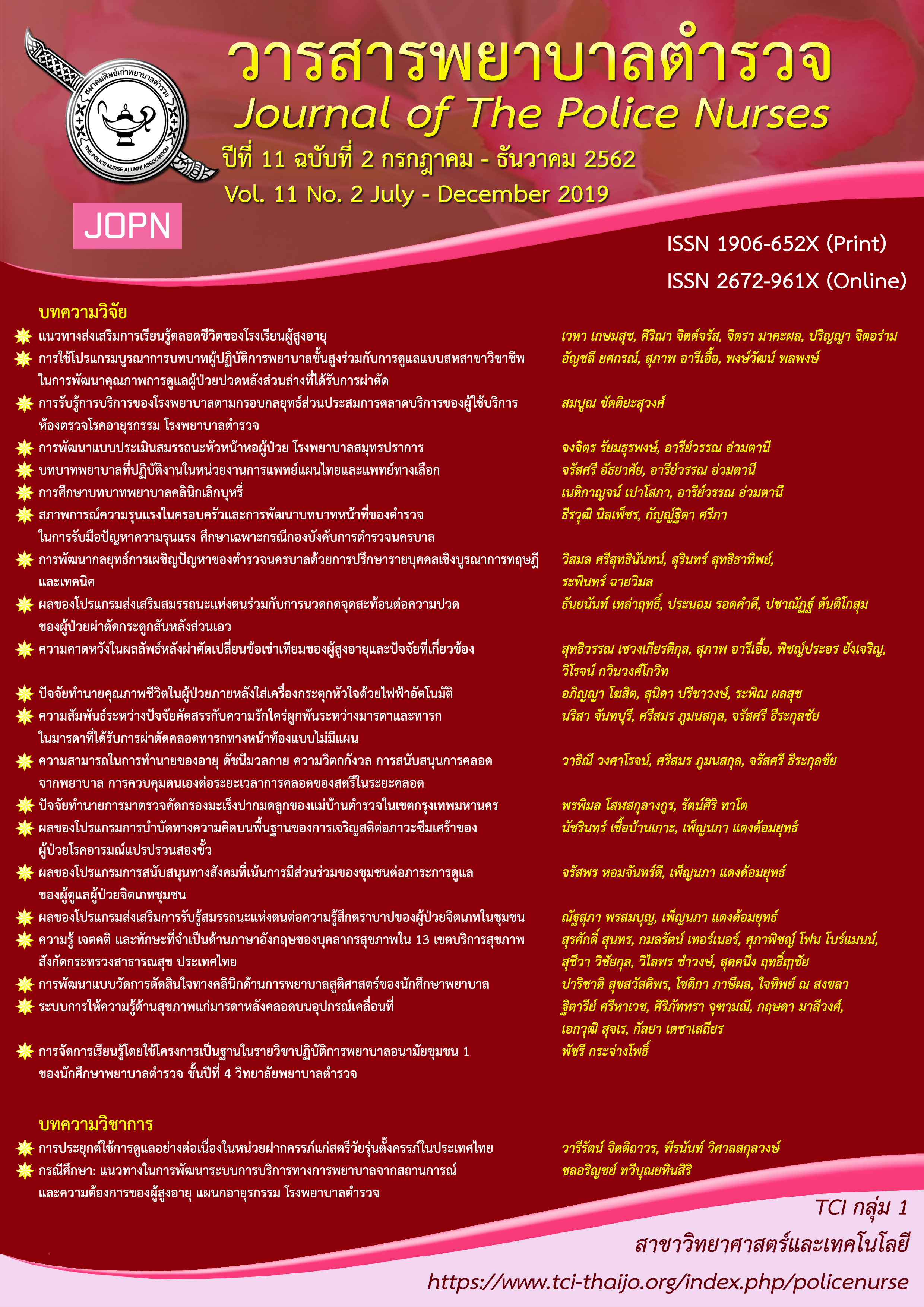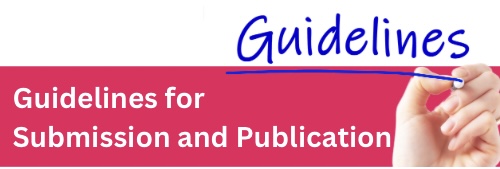UTILISATION OF CONTINUITY OF CARE IN ANTENATAL CARE FOR PREGNANT ADOLESCENT WOMEN IN THAILAND
Keywords:
continuity of care, pregnant adolescent women, antenatal careAbstract
Pregnancy in adolescent women and maternal and neonatal outcomes are a concern in maternity care in low- and middle-income countries, including Thailand because they often have a higher incidence of adverse perinatal outcomes. An effective maternity care can reduce adverse perinatal outcomes and also help pregnant adolescent women having a positive pregnancy experience using midwifery continuity of care as World Health Organization (WHO) recommendation. Pregnancy is a crucial time to support adolescent women having a positive pregnancy experience. Continuity of care is provided to pregnant women by a known nurse-midwife. Pregnant adolescent women receive care from a known nurse-midwife through pregnancy, birth and postpartum period. This continuity of care assists pregnant adolescent women building trust to nurse-midwife and also having confidence to do selfcare. In Thai context, utilization of continuity of care should start with a good relationship between nurse-midwives and pregnant adolescent women, so nurse-midwives need to engage and respect women as a mother at the first visit, including physical and psychosocial assessment, and pregnancy examination. It is important to provide an advice during pregnancy to pregnant women respecting their needs. This continuity of care may help pregnant adolescent women trust nurse-midwives and they also are being coordinated in selfcare during pregnancy because of having confidence and feeling a partnership in the care. If pregnant adolescent women have any complications, nurse-midwives are able to consult and collaborate the care with obstetricians. Nurse-midwives continue to look after those women until postpartum period and answer any questions to women’s families.
Downloads
References
Butchon, R., Liabsuetrakul, T., McNeil, E., & Suchonwanich, Y. (2014). Birth rates and pregnancy complications in adolescent pregnant women giving birth in the hospitals of Thailand. Journal of the Medical Association of Thailand, 97(8), 785-790. Retrieved from https://ovidsp.ovid. com/ovidweb.cgi?T=JS&CSC=Y&NEWS=N&PAGE=fulltext&D=medl&AN=25345252
Ganchimeg, T., Ota, E., Morisaki, N., Laopaiboon, M., Lumbiganon, P., Zhang, J., . . . Mori, R. (2014). Pregnancy and childbirth outcomes among adolescent mothers: A World Health Organization multicountry study. BJOG: An International Journal of Obstetrics & Gynaecology, 121(Suppl 1), 40-48. doi:https://dx.doi.org/10.1111/ 1471-0528.12630
Allen, J. (2019). Midwifery continuity of care for specific groups. In C. Homer, P. Brodie, J. Sandall, & N. Leap., Midwifery continuity of care (pp. 207-229) (2nd ed). New South Wales: Elsevier Australia.
Jittitaworn, W. (2019). Adverse perinatal outcomes and models of maternity care for Thai adolescent pregnant women: A mixed methods study. (Doctoral of Philosophy, Midwifery). Faculty of Heath, University of Technology Sydney, Sydney, Australia.
Jittitaworn, W., Fox, D., Catling, C., & Homer, C. S. E. (2019). Recognising the challenges of providing care for Thai pregnant adolescents: Healthcare professionals' views. Women and Birth. doi:10.1016/j.wombi.2019.03.015
Lanjakornsiripan, W., Amnatbuddee, S., Seejorn, K., Werawatakul, Y., Kleebkaow, P., Komwilaisak, R.,. . .
Luanratanakorn, S. (2015). Contraceptive practices and pregnancy intendedness among pregnant adolescents. International Journal of Women's Health, 7, 315-320.
Perriman, N., Davis, D. L., & Ferguson, S. (2018). What women value in the midwifery continuity of care model: A systematic review with meta-synthesis. Midwifery, 62, 220-229.
Sandall, J., Soltani, H., Gates, S., Shennan, A., & Devane, D. (2016). Midwife‐led continuity models versus other models of care for childbearing women. Cochrane Database of Systematic Reviews
4, Art, CD004667. doi: 10.1002/14651858. CD004667.pub5.
Sriyasak, A., Almqvist, A.-L., Sridawruang, C., Neamsakul, W., & Häggström-Nordin, E. (2016). Struggling with motherhood and coping with fatherhood–A grounded theory study among Thai teenagers. Midwifery, 42, 1-9.
Symon, A., Pringle, J., Cheyne, H., Downe, S., Hundley, V., Lee, E., . . . Alderdice, F. (2016). Midwifery-led antenatal care models: Mapping a systematic review to an evidence-based quality framework to identify key components and characteristics of care. BMC Pregnancy and Childbirth, 16(1), 168. doi:10.1186/s12884-016-0944-6
Wisanskoonwong, P. (2014). Midwifery Partnership between midwives and pregnant women for reducing risk factors of preterm birth. Kuakarun Journal of Nursing, 21(1), 34-44.
World Health Organization. (2016a). WHO recommendations on antenatal care for a positive pregnancy experience. Retrieved from https://apps.who.int/iris/bitstream/ handle/10665/250796/9789241549912-eng.pdf?sequence=1
World Health Organization. (2016b). World health statistics 2016 monitoring health for the SDGs. Retrieved from https://www.who.int/gho/publications/world _health_statistics/2016/en/
World Health Organization. (2018a). Adolescent pregnancy. Retrieved from https://www.who. int/en/news-room/fact-sheets/detail/ adolescent-pregnancy
World Health Organization. (2018b). Adolescents: health risks and solutions. Retrieved from https://www.who.int/news-room/fact-sheets/detail/adolescents-health-risks-and-solutions
Downloads
Published
How to Cite
Issue
Section
License
ผลงานที่ได้ตีพิมพ์แล้วจะเป็นลิขสิทธิ์ของวารสารพยาบาลตำรวจ















